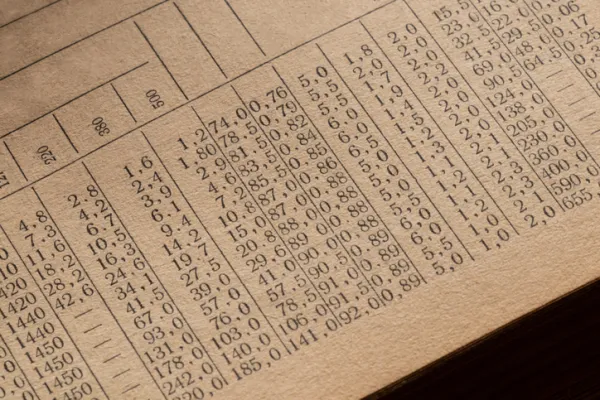The following investment recommendation from SumZero is a highly contrarian view on copper and why the price of the metal may be substantially inflated. Written by an investment analyst at a hedge fund, it provides institutional investors with an insightful and differentiated view on where the commodity may be heading.
iPath DJ AIG Copper Total Return Sub-Index ETN (Ticker: JJC) $42.29, May 25, 2010
Recommendation: Short
Executive Summary:
Both prices and inventories of copper are near historical highs. Economics 101 tells us this can’t last forever. Prices are elevated because investors are stockpiling the metal in China, but eventually this inventory will come back on the market, killing prices. The markets have yet to acknowledge these bearish fundamentals.
Fundamental disconnect:
Copper is selling for about $3.00/lb yet it costs less than ~$1.50/lb to produce. At the same time, global inventories are bulging no matter how you slice it. Adding these two facts together, a big red flag should pop up in your mind. Now consider that the forward curve – though in backwardation – levels out at about $2.75/lb, and that big miners like FCX and SCCO are trading at roughly 3X where they were at the bottom, when copper hit $0.60/lb.
This chart shows price and inventories (as reported by the Comex and London Metals Exchange) since 1970. Notice how the two have always moved opposite each other, except for the last 18 months:
http://www.copperjournal.com/copper_chart/cc.pdf
This chart shows that prices have usually been about $1.00/lb when inventories reach today’s level: http://www.istockanalyst.com/images/articles/332225copper2008final22010418372.jpg
If you’re still not sure something is amiss, let me put it another way: around April, the former mining minister of Chile warned that rising metal stocks could trigger a “violent change” to prices, and that the disparity between stocks and prices is the greatest in around 20 years. FYI, Chile is the world’s largest producer and exporter of copper – i.e. this isn’t just some short talking his book.
Bad data:
But how could such a large disconnect appear in a market as large and as visible as copper? (2009 production was 18.4 million metric tonnes, where 1 metric tonne = 2,204 lbs.) Well, it is a big market, but so is the amount of leverage that buyers can use. And despite copper’s importance, we often don’t have great data on this market. In fact, lousy data is a surprisingly common theme in the commodity world.
Official demand figures calculate what is known as “apparent demand,” that is, demand assuming that anything shipped to a country is being consumed by that country, but in fact that’s often not the case. A trade group called the International Copper Study Group finally, in March of this year, invited some analysts to present views on unreported stocks in China. Previously the ICSG has never taken unreported stocks into account when assessing Chinese demand, which is now the largest in the world.
Apparent copper demand from China implied year-over-year growth of 44% in 2009, though common sense tells you that wasn’t the case. It’s true that its government subsidized certain household goods in rural parts of country which boosted demand for copper tubing and wiring to some extent, but nevertheless we can see that industrial output of semi-fabricated copper products was up only about 10%. Meanwhile, copper imports were up 119% Y-O-Y. The difference implies an inventory build in the ballpark of two million tonnes.
Who to blame:
And where does this inventory go? Well, China has over 300 main hub ports, 200 of which are seaports and 128 are open to foreign vessels. Copper is being shipped into free trade zones where it can be warehoused in bond. Since it doesn't pass thru customs it doesn't show up in official trade data. Duty is only paid if the metal is imported, but not if it stays in a bonded warehouse or is shipped to another country, even if ownership changes. Not one of these warehouses is counted by the Comex or LME, and the Shanghai Futures Exchange only covers about 100,000 tonnes of the stuff. As a result, market participants like Chilean copper miner Codelco send their local staff in China to various ports in order to estimate the size of these unreported stocks. Around 12 tonnes of copper can be stacked per 2.5 square meters, so there’s plenty of room. Meanwhile, storage costs per year are less than 1% of the metal’s value.
This inventory build is often being financed by the Chinese banks which are the conduit for much of the government’s recent stimulus spending, with the condition that the collateral is held in their jurisdiction. And this collateral is typically easy to leverage against. Of course, you don’t call it speculation on the loan application. You tell the bank that you want to make transformers, or water heaters, or whatever. It appears that both local Chinese and Western investors are behind this phenomenon, according to a recent report by China Central Television (click here for Partial English translation.)
There is a common misconception that the government is behind most of this buying, but that’s probably true for 350,000 tonnes at most, and the bulk of that was likely bought in early 2009 at much lower prices. And forget about talk of diversifying away from the U.S. dollar. According to Eugen Weinberg, head of commodity research at Commerzbank, "it is not possible to the Chinese to use copper to diversify its [forex] assets. Even a 1M tonne purchase by them would have a massive effect on the price, but would only cost $6 billion."
By the way, the current price isn’t due to the recent earthquake in Chile either, which will likely cost not more than 10,000 tonnes out of global production of roughly 18 million tonnes in 2010.
How bad is it?
Inventories on the LME are near the 6.5 year high, while inventories in Shanghai are just below all time highs. So based on official data alone you could say prices are due for a fall. Chinese households are believed to be hoarding around 200,000 tonnes. Sources inside warehousing companies in China say unofficial stocks in china could be well over 800,000 tonnes, with stockpiling dating back to late-2004/ early-2005 - when copper started to rise from under $1.50/lb. David Threlkeld, a copper trader of 40 years, estimates 3 million tonnes of unreported inventory.
Where to from here?
Mr. Threlkeld recently told Bloomberg that “we're going to see a catastrophe in the market," and thinks prices might go as low as $1/lb. He notes that "should copper prices correct by 50%, the metal will still be profitable to mine." David Waite, President of CRM Associates, expects some of the material bought by speculators in 2009 to be released in 2010, leading to sharp drop in imports and a resulting surge in LME stocks in 2H10. Simon Hunt, another industry watcher, writes that "we're likely to see significant liquidation over the summer months." Considering that in the last downturn official stocks rose to 1.27M tonnes between the Comex and LME, I’d say that 2-3M tonnes of speculative inventory could test just about any low-watermark.
Investors might consider shorting JJC, which is an ETF that tracks the performance of an unleveraged position in short-term copper futures. But obviously there are many ways to play it. You could also short LCOP in London, which is a 2X leveraged ETF. And of course, you could also short or buy put options various mining equities that are highly geared to the price of copper.
Conclusion:
Commentators often use the word “insatiable” to describe China’s appetite for commodities. But realistically, even China can only consume so much. Today there’s just too much copper on China’s plate, and prices will fall as this market gets some serious indigestion.

SumZero (www.sumzero.com) is a growing community of buyside investment professionals with over 3,500 elite hedge fund and mutual fund analysts as members. SumZero affords institutional investors the opportunity to access a database of over 2,000 detailed investment recommendations written exclusively by buyside analysts/PMs.






